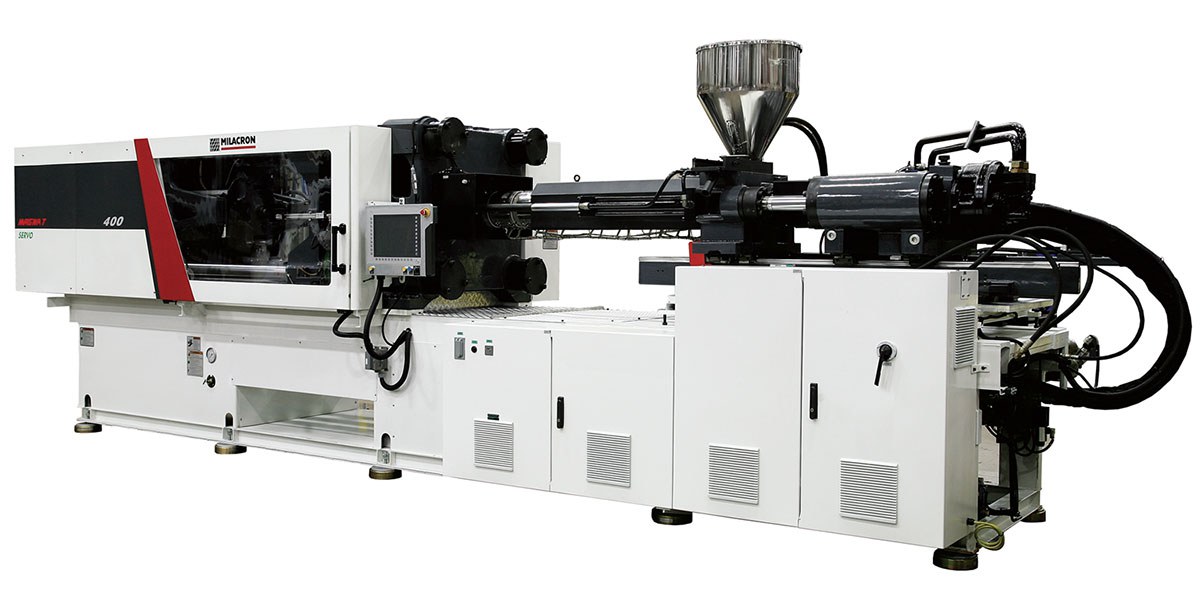Choosing the Right Cooling Method is the Key to Cycle Time Reduction
Air vs. Water Cooling Systems in Injection Molding
October 07, 2014
An always important factor of injection molding production is the total cycle time. One segment of the process is the cooling time of the machine tools and molds. Cooling happens to take the majority of the processing, so to optimize this process would heavily impact the overall production rate. Cooling systems are also imperative to reducing wear and tear on an injection molding machine.
The cooling process is the middle portion of the plastic running cycle. It comes after injection and before the ejection of the plastic. The goal of the cooling phase is to bring the running temperature of the plastic down to 100-140º F (from approximately 500º F) as it's being fed into the mold. The objective is to prevent the plastic from melting too early. The cooling system is also important as it helps maintain the quality of hydraulic fluid. If the hydraulic fluid in the machine overheats, the quality will degrade and have lower thermal stability. Viscosity and thermal stability are critical to keep an injection molding machine operating smoothly.
Injection molding machines are predominantly air cooled or water cooled. Both air and water cooled systems can be portable, centralized or operate plant wide. Let’s take a closer look at the important aspects of air and water cooled systems.
Air Cooling Systems
Using an air cooling system involves an evaporator to remove the heat from the injection system. An air cooled condenser is then used to remove the heat from the evaporator. What you can expect from an air cooling system is an air intake fan to direct cooler air toward the mold and an exhaust fan to move the hot air away from the mold. Air cooling systems transfer heat from the running water in the lines of an injection molding machine to ambient air surrounding those lines within a cooler. This air cooled by fans generally consumes 10% more electricity due to the fact that air does not conduct heat as well as water.
An air cooled system will discharge warm air into your plant. For this reason it is best to host an air cooled chiller outside of your building or in an area that is not air conditioned. Due to the increased air flow, air cooled systems generate dust and therefore must be maintained and cleaned regularly to keep performance levels high. In terms of space considerations, air cooled chillers can technically occupy any open or flat spaces and require less total space than a water cooled unit that requires a cooling tower.
Water Cooling Systems
Water cooling systems, also known as thermolators, operate by pumping chilled water through water lines that travel across the outside of the mold cavity and runner gates of a mold. These waterlines will be closest to the outside of the molded product's surface in order to ensure even cooling and prevent warping of the products surfaces. The water contained in cooling lines is chemically treated to prevent mold and bacterial growth or contamination of the waterlines.
Two types of water flows that weave through these waterlines are laminar and turbulent, which describe the manner in which the water travels. A laminar flow describes the straight shot of water through a line, so water within the center of the flow does not come in contact with the inside surface of the line. Turbulent flows are more efficient for cooling because more surface area of the water comes in contact with the heated mold cavity.
Water cooling systems can leave condensate on the outside of the mold. This is caused when the mold’s temperature is lowered below the dew point of ambient air. In warmer or humid climates, it is recommended to increase temperature of the chilled water to avoid condensate remaining on the outside of the mold when utilizing a water cooled system.
Water cooled chillers will require a peripheral cooling source such as a tower or evaporating condensers as a secondary cooling source. The cooling tower pumps lukewarm water into the chiller.
Cost Efficiency
The common perception is that an air cooled system has a lower initial cost than a water cooled system but over time the air cooled system will cost more as it consistently expels energy. Some experts have called this perception a myth because decision makers fail to calculate in the additional costs associated with the secondary cooling source required for a water cooled system. These resources include the water, sewer, chemical, pumping and fan costs for the cooling tower.
Which is Right For You?
There isn’t a decisive answer as to which cooling method is better as it will depend on your plant’s circumstances.
Generally for molding plastic, water is generally the preferred cooling method. Water does a better job of transferring heat and under most circumstances is more cost effective than an air cooled system. Another benefit of a water cooled system is that it leaves a reduced carbon footprint versus an air cooled system.
If you must use an air cooled system, consider recycling heat from the unit with a centrifugal blower. Dependent on your climate, the recycled heat can be used as a heat supplement within a facility in the winter. During the summer months or in warmer climates, it will be necessary to transfer the heat out of the building with an exhaust system to avoid overheating.

